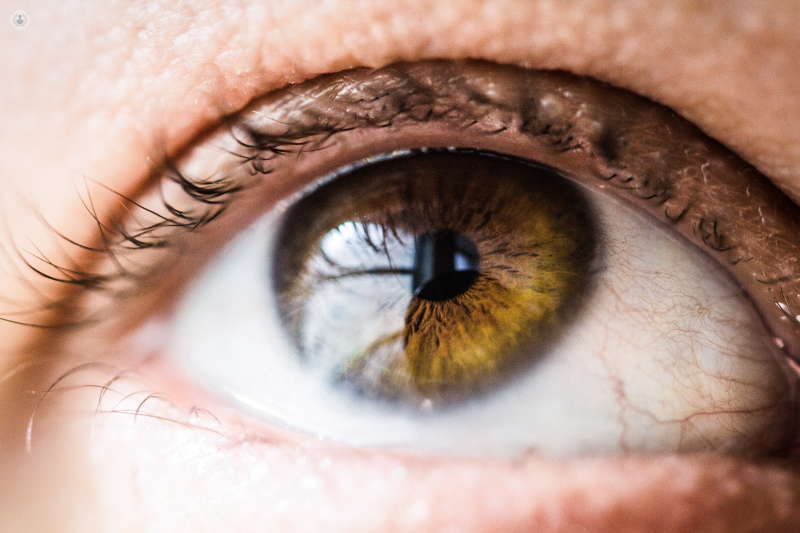
Preserflo Microshunt
FAQ
Frequently Asked Questions
The InnFocus MicroShunt is an 8 millimetre long tube that is inserted into the eye to help lower eye pressure and reduce the need for medications. It is made entirely of synthetic and biocompatible material called SIBS.
The MicroShunt won’t be rejected by the body and will not disappear or disintegrate with time. As it is not metallic, it will not set off airport scanners and is safe if you need to have an MRI or CT scan.
Glaucoma is most commonly associated with a buildup of fluid pressure inside the eye. This buildup of fluid pressure is caused by partial blockage of the natural drainage channel of the eye. This pressure can damage the optic nerve which carries images from the eye to the brain affecting your vision. This fluid produced inside your eye is call aqueous humour, which is not your tear.
Like trabeculectomy surgery, the MicroShunt drains fluid from inside the eye to outside, under a thin skin-like membrane covering the white of the eye called conjunctiva. The fluid is drained and pooled under conjunctiva forming what is called a bleb. Unlike iStent, Hydrus or Cypass, which enhance the normal drainage of the fluid, MicroShunt and XEN implants are more similar to trabeculectomy and traditional aqueous implants (Ahmed or Baervledt) which create a new drainage pathway for aqueous humour. The latter is more effective at lower eye pressure. However, you may not require very low eye pressure if you only have mild glaucoma.
The MicroShunt can only be seen inside the eye under very high magnification.
The Innfocus MicroShunt is suitable for patients with uncontrolled eye pressure, as its pressure lowering effect is superior to implants that target the normal drainage channels (iStent, Hydrus or CyPass).
Innfocus MicroShunt might be as effective as trabeculectomy and it is therefore potentially suitable for moderate-to-advanced glaucoma.[1] This is currently under investigation in a large international trial, and is not yet commercially available.
The Innfocus MicroShunt will lower your eye pressure and prevent further damage to the optic nerve caused by eye pressure.
The Innfocus MicroShunt could be as effective as trabeculectomy. However, this hypothesis is still currently under formal investigation. Compared to trabeculectomy, Innfocus MicroShunt has the advantage that the procedure is shorter, less invasive, and requires fewer post-operative visits.
The InnFocus MicroShunt will not cure your glaucoma, reverse any damage already caused by glaucoma, or bring back any lost vision.
The operation is usually performed under a local anaesthetic, meaning that you are awake but your eye is numb so you will not feel anything. Your eye will be numbed with eye drops and then a small injection will be given around your eye. The injection may cause a pressure sensation and brief discomfort. You will have the option of requesting light sedation. The local anaesthetic takes several hours to wear off and may affect your vision during this time.
Similar to trabeculectomy, a medication called mitomycin C will be applied to reduce scarring. It is designed to enhance the long term success of the surgery. The thin skin like membrane covering the white of your eye (conjunctiva) will be opened and the InnFocus MicroShunt is inserted inside your eye. The conjunctiva will be closed with one or two stitches (in contrast, 4-6 stitches will be required for trabeculectomy).
The entire surgery takes about 20 minutes. Compared to trabeculectomy, MicroShunt requires less stitches. These stitches will be removed later in clinics or dissolved by themselves.
Following surgery your eye may be slightly blood shot and swollen for a few days. Your vision may also be blurry for 1 – 2 weeks after the procedure. You may read and watch television; these activities will not harm your eye. You will generally have no sensation from the presence of the bleb.
You will be given new anti-inflammatory and antibiotic eye drops to prevent inflammation and infection. The anti-inflammatory drops will normally need to be continued for 3 months.
The MicroShunt will begin to work straight away to lower your eye pressure and you can stop taking ALL your glaucoma drops in the operated eye. Any drops you use in your other eye must be continued as normal.
As with all eye surgery, you should avoid strenuous activity for the first month including swimming, tennis, jogging, and contact sports. Most people take 1 – 2 weeks off work after surgery, however the length of time will depend on the nature of your work.
It is safe to fly after surgery, however you will need to be seen few times by your surgeon in the first two months.
Serious complications are rare. You could have a small amount of bleeding inside your eye. If this happens, your vision could be blurred for one to two weeks.
Like all glaucoma surgery, the eye pressure lowering effect of MicroShunt may wear off with time. This is most due to scarring around the MicroShunt. If this happens, you will need to restart your glaucoma medications or have further procedures to control your eye pressure, which would usually be an aqueous shunt (Baerveldt or Ahmed implant).
Like trabeculectomy or XEN implants which all create blebs, any bleb related risk such as life-long risk of infection is potentially present in MicroShunt surgery.
The closest alternatives to the MicroShunt will be a traditional trabeculectomy or aqueous shunt implant (Baerveldt or Ahmed). At this stage, we do not have long term data on MicroShunt as we do with trabeculectomy.
Batlle, J.F., et al., Three-Year Follow-up of a Novel Aqueous Humor MicroShunt. J Glaucoma, 2016. 25(2): p. e58-65.
Editors
Founding Editors
MIGS.org was developed by glaucoma surgeons with a broad experience in minimally invasive glaucoma surgery to provide patients with evidence-based and unbiased information.


Glaucoma Specialist
Dr Nathan Kerr





